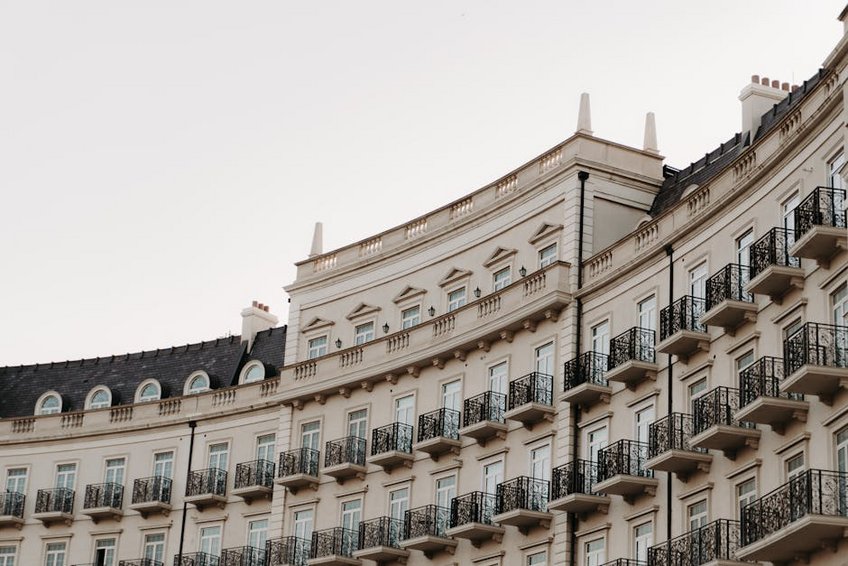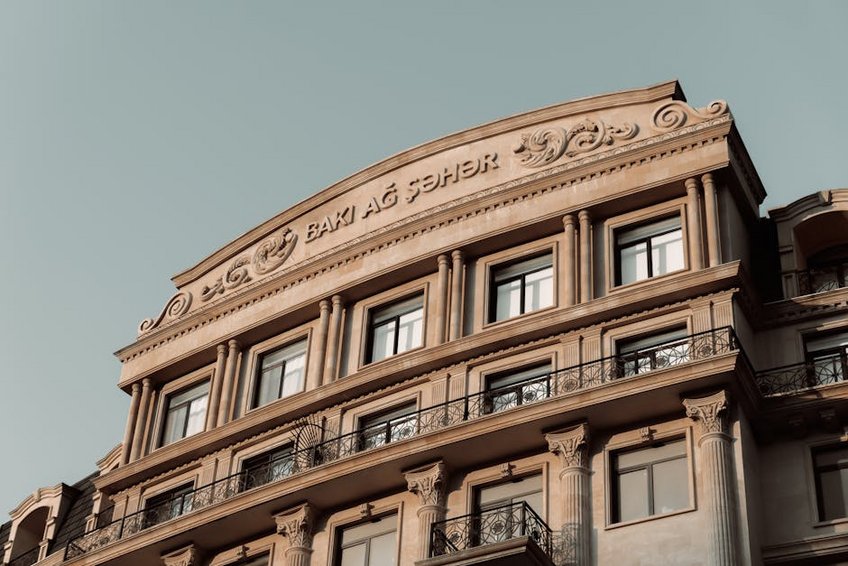Baku Inner City: Your Ultimate Guide to Icherisheher
Stepping into Baku Inner City, known locally as Icherisheher, feels like walking through a living history book where ancient walls whisper tales of Silk Road merchants, medieval kings, and oil barons. As Azerbaijan’s historic heart and a UNESCO World Heritage Site, this fortified complex offers an unforgettable journey through time, blending millennia-old architecture with vibrant modern cafes and artisan workshops. You’ll discover winding cobblestone lanes that suddenly open into majestic plazas, hidden courtyards where local artists work, and panoramic views of the Caspian Sea that will literally take your breath away. The Baku Inner City experience is unique because it perfectly balances profound historical significance with contemporary energy, making it equally captivating for history buffs, architecture lovers, and casual wanderers seeking authentic moments. Whether you’re marveling at the iconic Maiden Tower, bargaining for handmade carpets in the bazaar, or simply sipping tea in a shadowed courtyard, this ancient quarter promises memories that will stay with you long after you’ve returned home.
Baku Inner City Essential Information – What Every Traveler Should Know
Before you embark on your Baku Inner City adventure, understanding its historical context and practical realities will significantly enhance your experience. This walled city dates back to at least the 12th century, though evidence suggests settlements existed here as early as the 8th century, making it one of the region’s oldest continuously inhabited areas. The entire complex covers approximately 22 hectares (54 acres) and contains over 50 historical monuments, including palaces, mosques, bathhouses, and caravanserais that served Silk Road travelers. You’ll want to allocate at least half a day to properly explore without rushing, though many visitors find themselves returning for multiple days to fully absorb the atmosphere. The main entrance gates are near Fountains Square and the Double Gates near the Palace of the Shirvanshahs, with several smaller access points throughout. Remember that this is both a tourist attraction and a functioning residential neighborhood where approximately 3,000 people still live, so respectful behavior is essential when photographing or exploring residential areas.
Historical Significance and UNESCO Status – Understanding the Context
- Icherisheher was inscribed as a UNESCO World Heritage Site in 2000 due to its outstanding preservation of medieval Islamic architecture and its role as a crucial Silk Road trading hub for centuries.
- The city walls, standing up to 8 meters (26 feet) high in sections, were largely constructed during the 12th century but have been reinforced multiple times throughout history, most notably after Russian bombardment in the 19th century.
- Archaeological excavations have revealed evidence of habitation dating back to the 8th-11th centuries BC, with the current layout primarily reflecting the 12th-century expansion under the Shirvanshah dynasty.
- Budget travelers can experience Baku Inner City for approximately $25-35 USD per day by focusing on free exploration of streets and squares, bringing their own water and snacks, and purchasing combination tickets for major attractions.
- Mid-range visitors should budget $50-75 USD daily for guided tours, meals at traditional restaurants within the walls, souvenir shopping at artisan workshops, and entrance to all major historical sites.
- Luxury experiences range from $100-200+ USD per day including private guided tours, dining at upscale restaurants like Sirvansah Museum Restaurant, shopping for high-quality carpets and jewelry, and perhaps staying in one of the boutique hotels within the walls.
- Icherisheher State Historical-Architectural Reserve Department Official Site
- UNESCO World Heritage Centre – Walled City of Baku with the Shirvanshahs’ Palace and Maiden Tower
Practical Visiting Information – Hours, Tickets, and Accessibility
Access to Baku Inner City itself is free and open 24/7, as it’s a public space, though individual attractions within have varying hours and admission fees. The major sites like the Palace of the Shirvanshahs and Maiden Tower typically operate from 10:00 AM to 6:00 PM daily, with last admission 30 minutes before closing. Ticket prices range from $5-8 USD per attraction, with combination tickets available for around $15 USD that cover multiple sites. For those with mobility challenges, be aware that the cobblestone streets can be uneven and slippery when wet, with many areas inaccessible to wheelchairs due to steep inclines and steps. The best approach is to enter through the main gates near Fountains Square where the terrain is relatively flat, then explore radially from there. During summer months (June-August), visit early morning or late afternoon to avoid both crowds and the intense heat that radiates from the ancient stone pathways.

Baku Inner City Planning Your Trip – Seasons, Budget, and Preparation
Planning your Baku Inner City visit requires consideration of seasonal weather patterns, budget allocation for experiences, and practical preparation for navigating this ancient environment. Azerbaijan experiences four distinct seasons, each offering dramatically different experiences within the walled city, from the vibrant spring blossoms in hidden courtyards to the magical winter atmosphere when ancient stones glisten with frost. Your budget should account not just for admission fees but for the incredible dining experiences, handmade crafts, and potentially a guided tour to fully appreciate the historical context. Western visitors from the US, UK, Canada, and EU will find that their money goes quite far here, with most expenses being significantly lower than comparable European destinations. You’ll want to pack comfortable walking shoes with good grip for the uneven surfaces, a reusable water bottle to stay hydrated while exploring, and a power bank for your phone since you’ll undoubtedly be taking hundreds of photos of the photogenic lanes and architecture.
Best Time to Visit Baku Inner City
The ideal time to explore Baku Inner City is during the shoulder seasons of April-May and September-October when temperatures range from a pleasant 15-25°C (59-77°F) and tourist crowds are manageable. Spring brings brilliant wildflowers blooming in unexpected crevices of the ancient walls and perfect conditions for photography with soft, golden light. Autumn offers similarly comfortable temperatures with the added bonus of cultural events often taking place in the historic squares. Summer months (June-August) can be extremely hot, with temperatures frequently exceeding 35°C (95°F), making midday exploration uncomfortable despite the shade provided by narrow streets. Winter visits (November-March) offer a completely different atmosphere with fewer tourists and the possibility of seeing the ancient stones dusted with snow, though some smaller shops and cafes may have reduced hours during this period.
Budget Planning and Costs for Baku Inner City
Essential Preparation Checklist
Preparing properly for your Baku Inner City exploration will ensure you maximize your experience while staying comfortable throughout the day. First, check visa requirements – citizens of the US, UK, Canada, EU, Australia, and many other countries can obtain an eVisa online before travel for approximately $25 USD, valid for 30 days. Download offline maps or navigation apps since the winding, seemingly identical streets can be confusing to navigate, though getting lost is part of the charm. Exchange some local currency (Azerbaijani Manat) as smaller shops and cafes may not accept credit cards, though ATMs are available near the entrance gates. Pack sun protection even outside summer months as the light-colored stone reflects sunlight intensely, and consider bringing a small flashlight if you plan to explore in the evening when some alleyways are poorly lit. Finally, research basic Azerbaijani phrases – while many people in tourist areas speak English, knowing simple greetings and thank you (sag olun) will be appreciated.
Baku Inner City Top Attractions and Activities – Must-See Highlights
Exploring Baku Inner City’s top attractions feels like uncovering layers of history with each step, from towering medieval structures to intimate museums showcasing Azerbaijan’s rich cultural heritage. The absolute must-see sites cluster in the northeastern section near the highest point of the complex, where strategic positioning provided defensive advantages and breathtaking views of the Caspian Sea. You’ll want to start your exploration at the iconic Maiden Tower, then work your way through the Palace of the Shirvanshahs complex before meandering through the atmospheric streets to discover smaller mosques, bathhouses, and caravanserais that each tell their own stories. Beyond the major monuments, some of the most memorable experiences come from simply observing daily life in this living museum – watching local artists at work in their studios, hearing the call to prayer echo through ancient streets, and discovering hidden courtyards where pomegranate trees shade stone benches perfect for contemplation. Allow yourself to get intentionally lost between major sites, as the real magic often happens in the spaces between guidebook highlights.
Must-See Highlights – The Essential Experiences
No visit to Baku Inner City is complete without experiencing its crown jewels, starting with the mysterious Maiden Tower (Qiz Qalasi), an enigmatic 12th-century structure that dominates the skyline and offers panoramic views from its rooftop. The Palace of the Shirvanshahs complex represents the absolute peak of medieval Azerbaijani architecture, with its Divankhana reception hall, royal tombs, and the hauntingly beautiful Keyguba Mosque. The Mohammed Mosque, also known as Siniggala Mosque for its damaged minaret, provides insight into the city’s resilience after historical earthquakes. For a truly immersive experience, time your visit to include the late afternoon when golden light transforms the pale limestone buildings into glowing sculptures, then transition into evening when the illuminated monuments create a magical atmosphere perfect for photography. Don’t miss the chance to walk along sections of the fortified walls, particularly near the Shirvanshah Palace where you can appreciate the strategic positioning that made this citadel virtually impregnable for centuries.
Hidden Gems and Local Favorites – Beyond the Guidebooks
While the major monuments draw the crowds, Baku Inner City’s true character reveals itself in its quieter corners and local haunts that many visitors overlook. Seek out the tiny but fascinating Museum of Archaeological Excavations near the Maiden Tower, where glass floors allow you to walk over unearthed foundations of ancient structures. The traditional hamam (bathhouse) near the Double Gates has been restored and offers a authentic experience for those looking to soak away sightseeing fatigue in historic surroundings. For the best local shopping, bypass the tourist-oriented shops near the entrances and seek out smaller artisan workshops in the western section where you can watch carpet weavers, ceramic artists, and traditional instrument makers practicing centuries-old crafts. The most magical experience might be simply finding a quiet courtyard in late afternoon, perhaps near the Juma Mosque, and listening to the sounds of the city while enjoying a cup of aromatic Azerbaijani tea from a nearby çayxana (teahouse).
Baku Inner City Practical Travel Information – Transportation, Accommodation, and Navigation
Navigating Baku Inner City requires understanding both how to reach this historic district and how to move within its labyrinthine streets once you’ve arrived. The walled city sits at the heart of modern Baku, making it easily accessible by various transportation methods from anywhere in the capital. Once inside the walls, you’ll be exploring exclusively on foot as vehicles are prohibited except for resident access, creating a wonderfully pedestrian-friendly environment. Accommodation options range from historic hotels within the walls themselves to modern establishments in the surrounding city, each offering different advantages depending on your travel style and budget. The following table breaks down the practical aspects of experiencing Baku Inner City, from transportation options to accommodation choices that will suit various preferences and spending levels.
| Category | Options/Features | Price Range (USD) |
|---|---|---|
| Transportation to Entrance | Taxi from city center, Baku Metro (Icherisheher station), walking from most central hotels | $2-5 (taxi), $0.30 (metro) |
| Guided Tours | Official guides at entrance, private tours, audio guides available at major sites | $20-50 for half-day tours |
| Accommodation (Inside Walls) | Boutique hotels in restored historic buildings, limited availability | $120-250 per night |
| Accommodation (Outside Walls) | Modern hotels within 5-10 minute walk, wider range of options | $60-150 per night |
| Dining (Inside Walls) | Traditional restaurants in historic buildings, courtyard cafes, tea houses | $15-30 per meal |


